Yes, China is a climate champion
How the world's largest emitter is actually leading global decarbonization
Climate debates on China often center on a seemingly paradoxical question: how can the world's largest carbon emitter simultaneously be its most crucial ally in the fight against climate change? While China's coal-dependent industrialization has made it responsible for a huge share of the world's current emissions, the country has also emerged as the undisputed leader in clean energy manufacturing and deployment. This apparent contradiction has fueled heated discussions about China's true climate legacy.
My analysis reveals that China is hardly responsible for climate breakdown — rather, China is proving to be one of the world's most important forces in decarbonization efforts, both at home and abroad.
The emissions picture is more complex than it appears
The case against China seems straightforward. In 2023, the country accounted for 31.5% of global CO2 emissions (production-based), making it by far the world's largest emitter. China's growing emissions stem largely from rapid economic growth and industrialization since the 1980s, fueled by coal-powered energy.
These figures are undeniably problematic, but they tell only part of the story. The emissions picture changes dramatically when we consider two crucial factors: international trade patterns and per capita emissions.
International trade patterns can be considered by looking at consumption-based rather than production-based emissions — the former account for the carbon footprint of goods consumed rather than just produced. These matter considerably for export-oriented economies like China's. It is also important to consider China’s huge population when looking at emissions: China makes up 17% of the world’s population, and should therefore be expected to account for more of the world’s emissions compared to smaller countries. We can adjust for population size by looking at per capita figures.
When we make these adjustments — by examining consumption-based per capita CO2 emissions — China is not the primary culprit behind global warming. Instead, it's the United States, whose per capita emissions are 16.5 metric tons, roughly twice those of China’s per capita emissions.
Even accounting for these adjustments, China's emissions remain substantial. But we're still missing the most crucial factor in assessing responsibility for climate breakdown: historical context.
Historical responsibility: who created this crisis?
Understanding responsibility for climate change requires examining cumulative emissions — the total carbon released since the 1800s, when emissions began increasing substantially. This historical perspective fundamentally changes how we assign responsibility for our current climate crisis.
Researchers have in fact calculated different regions' responsibility for climate breakdown based on cumulative emissions. They have done this by dividing the global safe carbon budget into national 'fair shares' on a per capita basis, then assessing each country's historical emissions against these allocated shares. The results are striking: China is responsible for a mere 1% of climate breakdown. By contrast, the United States bears responsibility for 38% and the European Union for 29%.
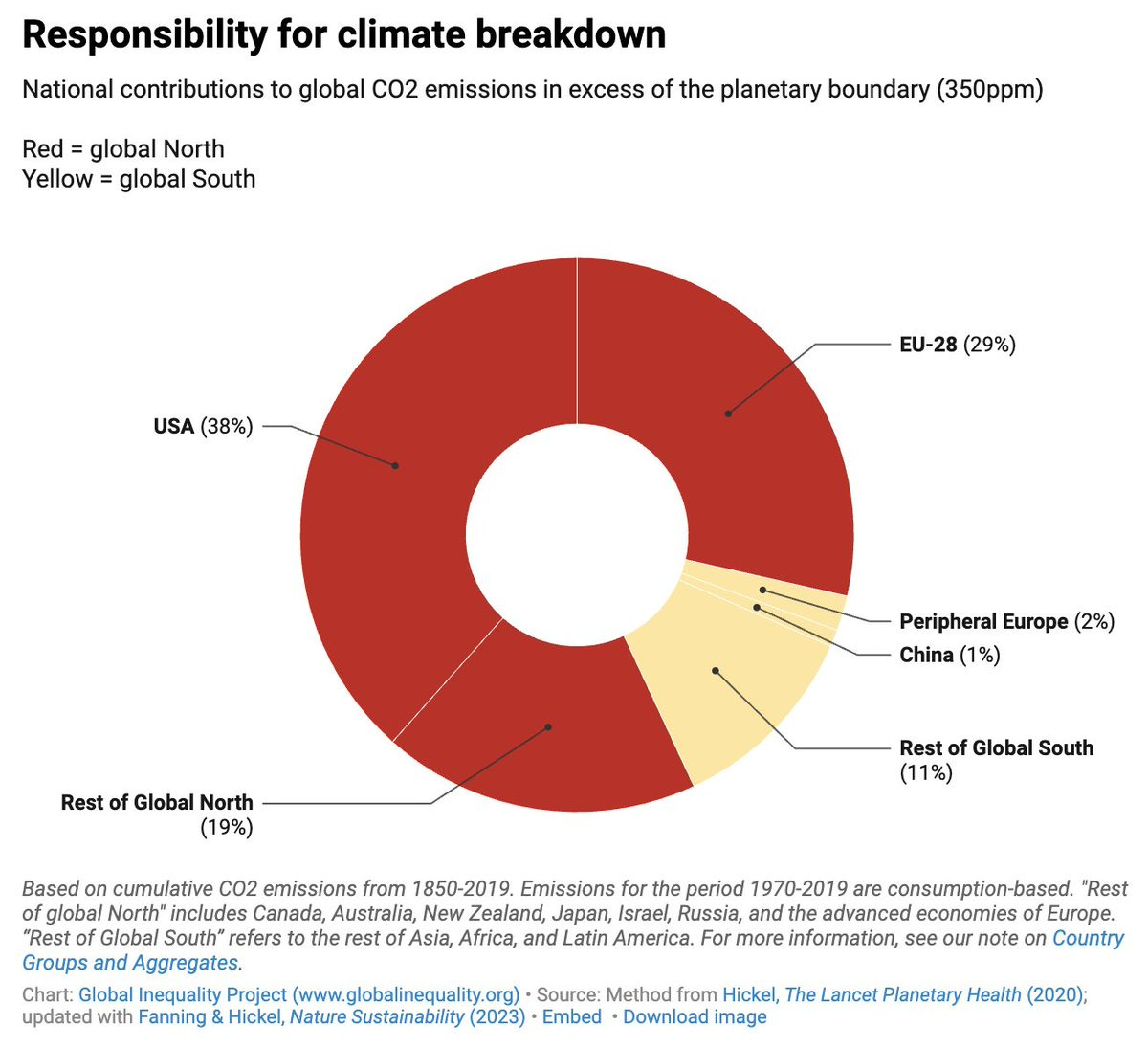
This historical analysis highlights an important point: blaming China for climate breakdown fundamentally misses the mark. The climate crisis was created primarily by the United States and Europe over the past two centuries. China's emissions are a relatively recent phenomenon.
China is leading the clean energy revolution
In addition to understanding the responsibility for climate breakdown, we also need to ask: who is leading the solution? China is making a very strong case for itself. The country has leveraged its industrialization to build impressive capabilities in clean energy production at a blistering pace.
Consider this stunning shift: in every major category of clean energy technology, China now accounts for at least two-thirds of the global market share. This is extraordinary considering that China was one of the smallest global players in clean energy technology just 20 years ago. The success story of BYD, the Chinese EV manufacturer that recently surpassed Tesla in global sales to become the world's largest electric vehicle company, exemplifies this transformation.
China's clean energy surge becomes even more impressive when we examine new installed capacity. In wind and solar power, China's contribution to new global capacity has grown from a mere 0.6% in 2001 to 63.3% in 2024. Meanwhile, the United States and Europe — regions largely responsible for climate breakdown — have been investing comparatively little in these critical sectors.
This dramatic shift in clean energy investment represents more than just national industrial policy; it's effectively cleaning up the mess that Western industrialization created. While China's absolute emissions have continued growing alongside its clean energy expansion, recent data suggests the country may be reaching a crucial turning point.
Turning the corner: China's emissions begin to decline
For the first time in China's modern history, the country's CO2 emissions have dropped for a full year that was characterized by growth in energy demand. This milestone occurred because rapid growth in clean energy production finally began outpacing growth in total energy consumption.
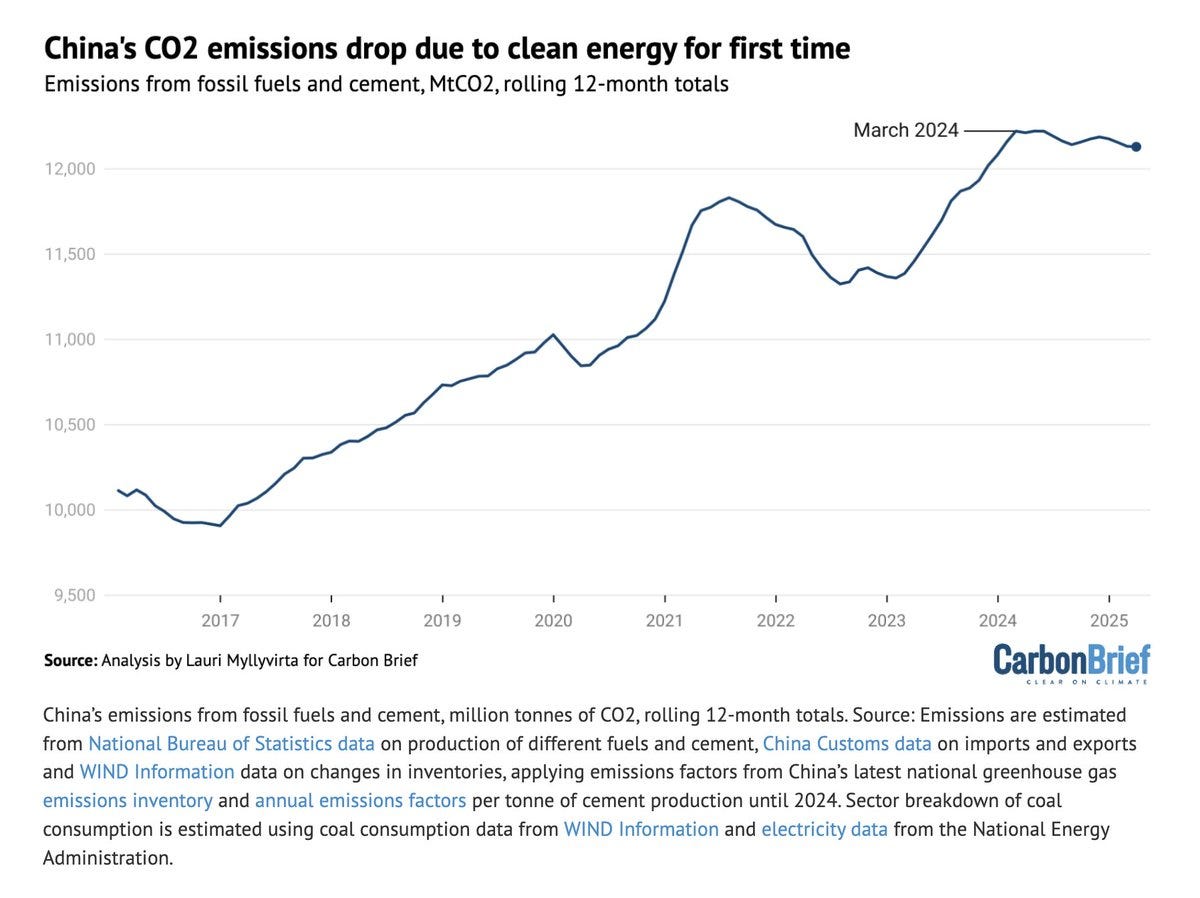
This development signals that China's massive investments in clean energy infrastructure are beginning to pay dividends in emissions reduction, even as the economy continues growing. It suggests that China may be pioneering a new model of economic development that decouples growth from emissions — something Western nations failed to achieve during their own industrialization.
How China is enabling global decarbonization
China's clean energy transformation extends far beyond its borders, fundamentally reshaping global decarbonization possibilities. The country's clean energy exports totaled $143 billion in 2024 across lithium-ion batteries, solar panels, and electric vehicles — approximately 10 times higher than comparable exports from the United States.
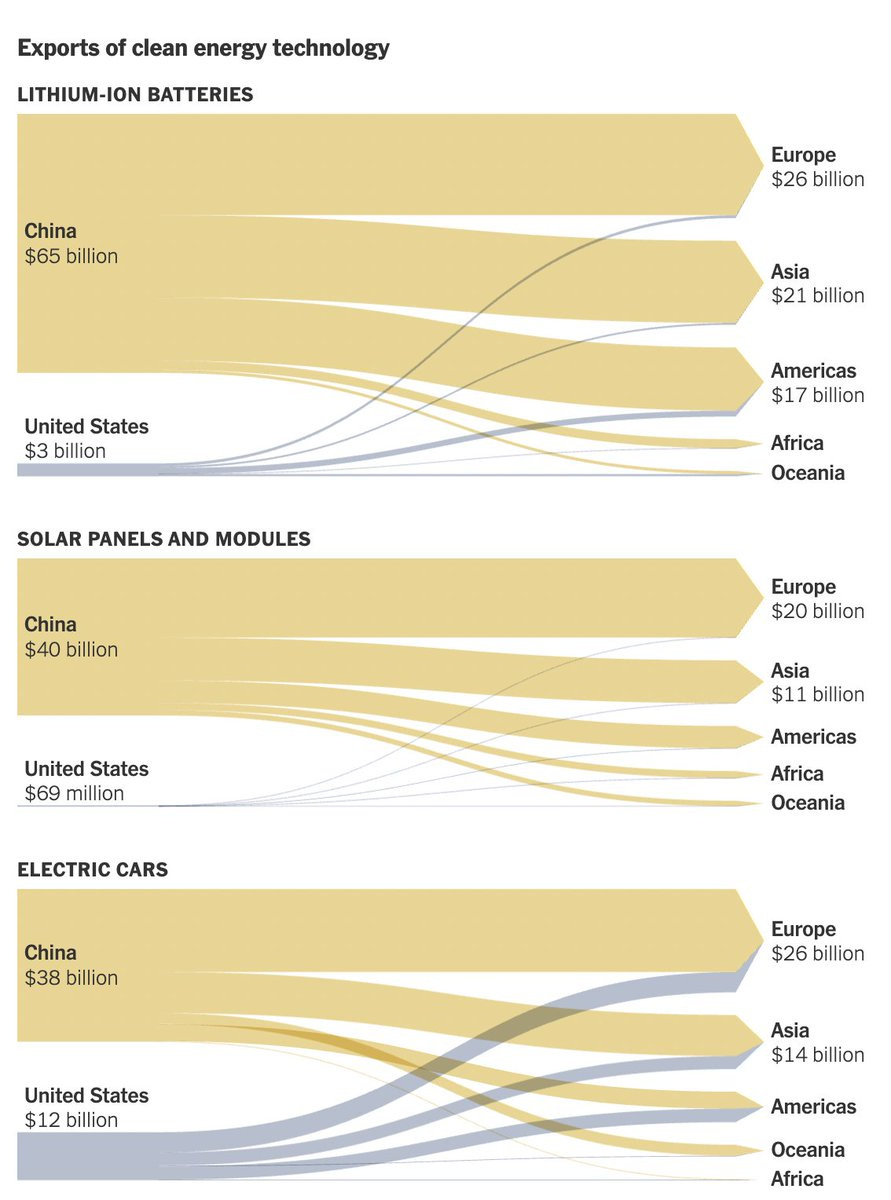
China’s contribution to decarbonization abroad isn’t just happening via exports of clean energy technology. The country has also become a global vehicle for clean energy investment. Chinese companies have announced a staggering $168 billion in foreign investments in clean energy manufacturing, generation and transmission since 2023. Notable projects include an $11 billion solar plant in Indonesia, a $9.4 billion hydroelectric dam in Congo, and an $8.1 billion battery plant in Hungary.
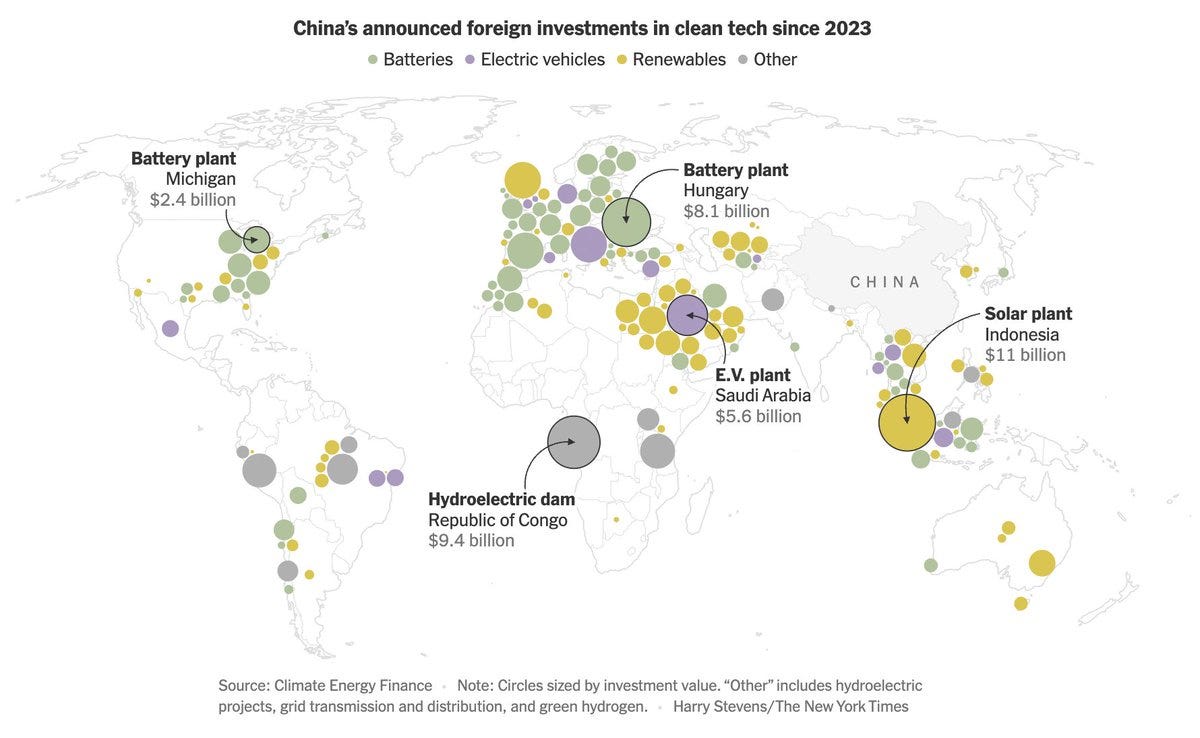
China’s clean energy exports and foreign investments are, of course, not charity. They involve business negotiations and diplomacy, and are undoubtedly part of China’s soft power strategies abroad. However, the clear upside is that a greater number of developing countries can achieve energy independence through these partnerships with China. Whereas fossil fuels constantly need to be imported — at least for those countries not endowed with plenty of it — the resources needed for a solar plant, a hydroelectric dam, or a wind farm are naturally replenished by the sun, flowing rivers, or the wind.
Conclusion: reframing the climate debate
When assessed comprehensively, the evidence points to a clear conclusion that challenges conventional wisdom about China's impact on the climate. While China's absolute emissions remain substantial, the country's net impact on decarbonization is overwhelmingly positive.
China bears minimal responsibility for the climate crisis that confronts us today. More importantly, China has become the world's indispensable clean energy leader, driving decarbonization both domestically and internationally. As China's emissions begin declining even amid economic growth, the country is effectively cleaning up the mess created by the West.
The implications for global climate cooperation are profound. The international community should recognize China as an essential partner whose clean energy capabilities are fundamental to achieving global decarbonization goals. Without Chinese leadership in clean energy innovation, manufacturing, and deployment, tackling the climate crisis seems like a far-fetched goal.



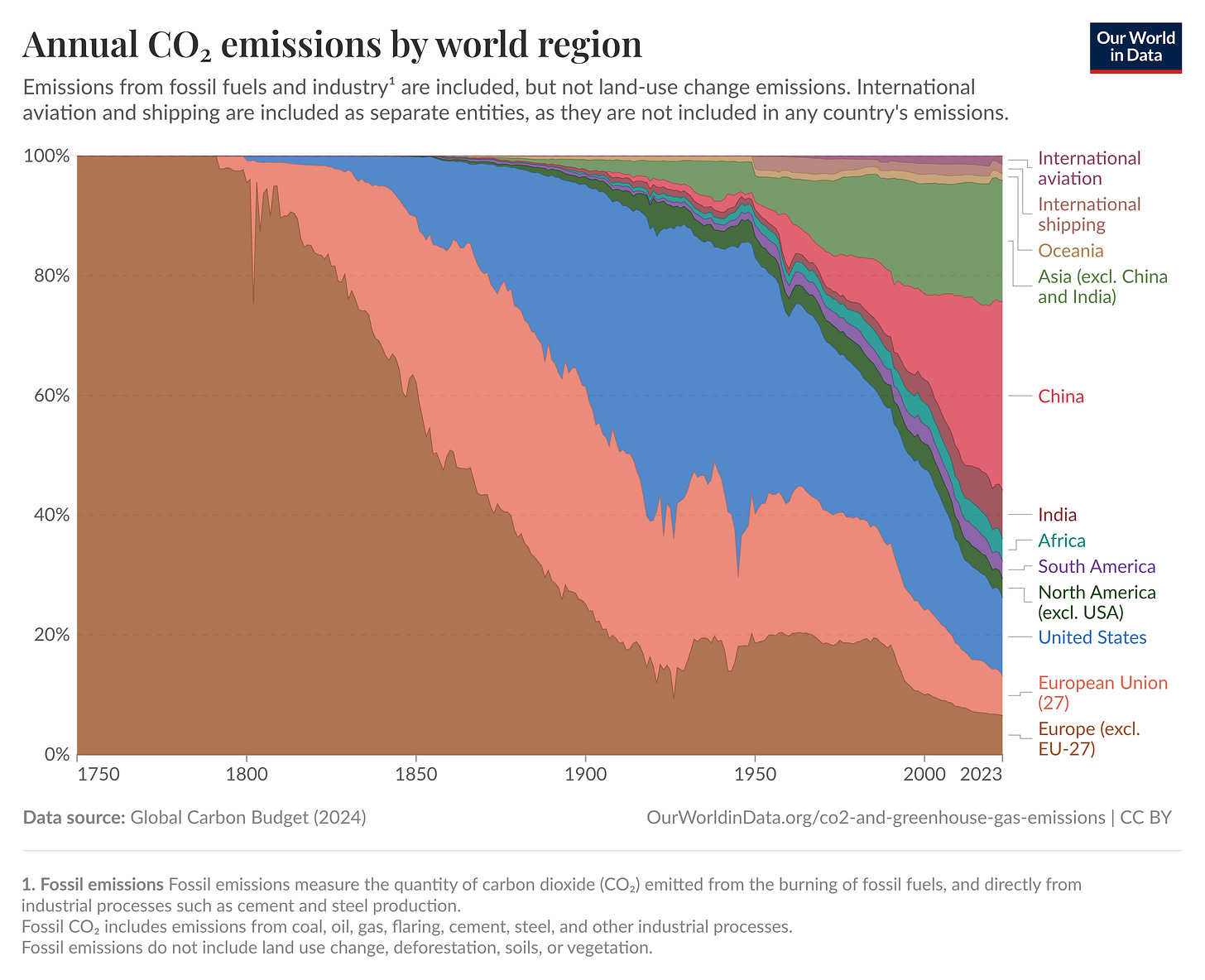
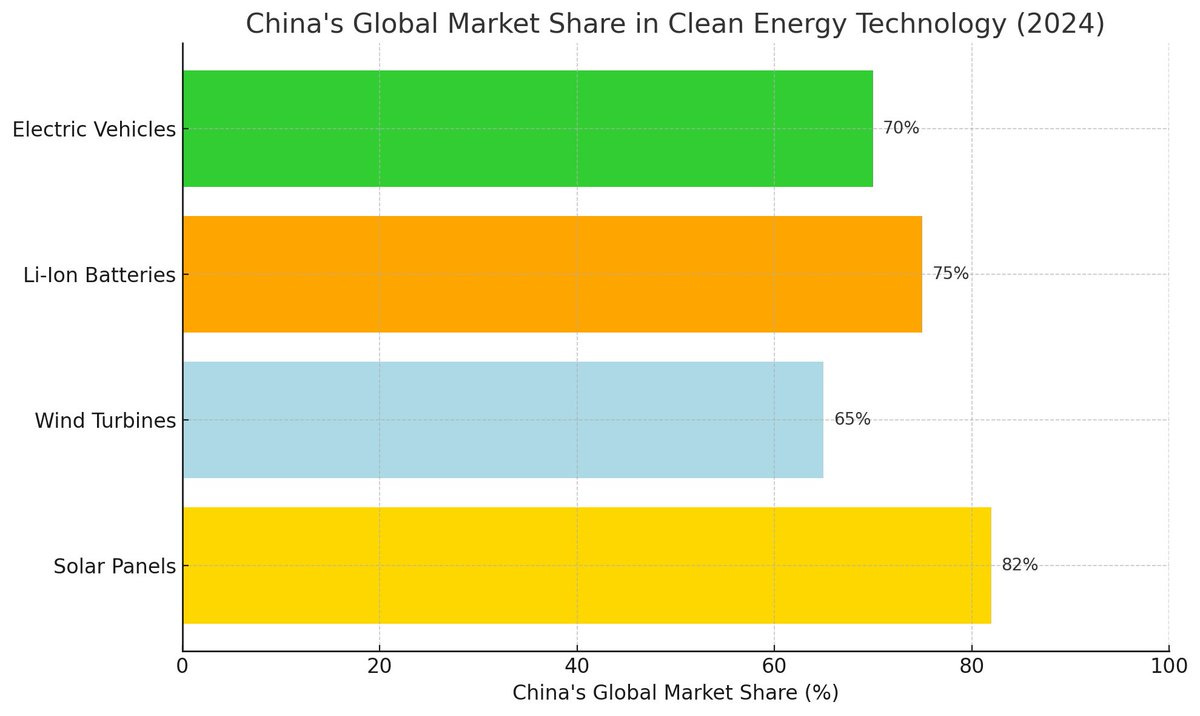
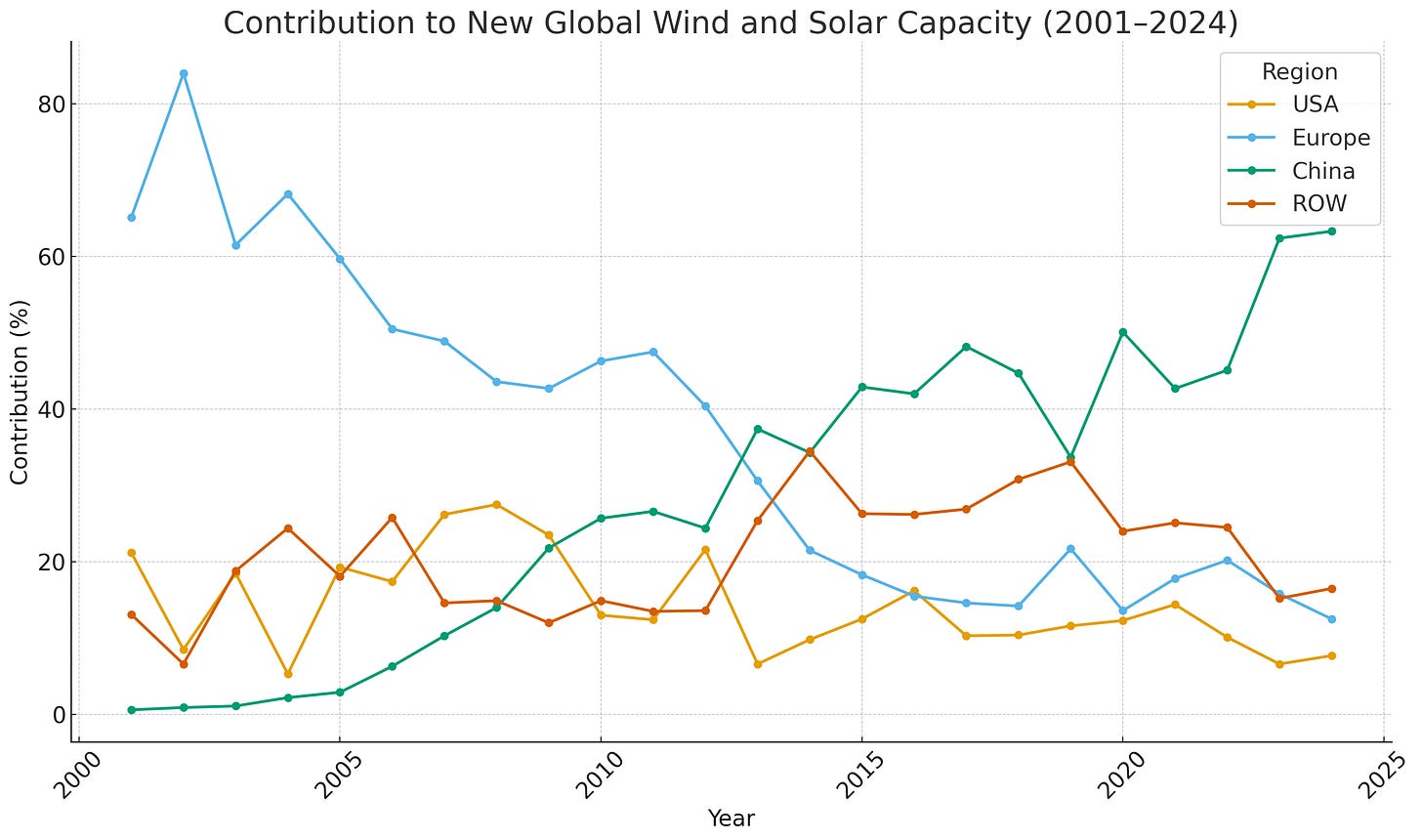
I don't disagree with most of this but I am a little puzzled by the historical emissions point: By the time of the Paris Agreement, according to Carbon Brief "China’s historical emissions within its borders have now caused more global warming than the 27 member states of the EU combined.." They continue "While developed countries have used the majority of this (carbon) budget, the analysis shows that China’s historical emissions reached 312GtCO2 in 2023, overtaking the EU’s 303GtCO2." Since then, of course, emissions continued to rise, except for the pandemic, until this year. Per capita emissions as you know, are higher in China than in most of Europe.